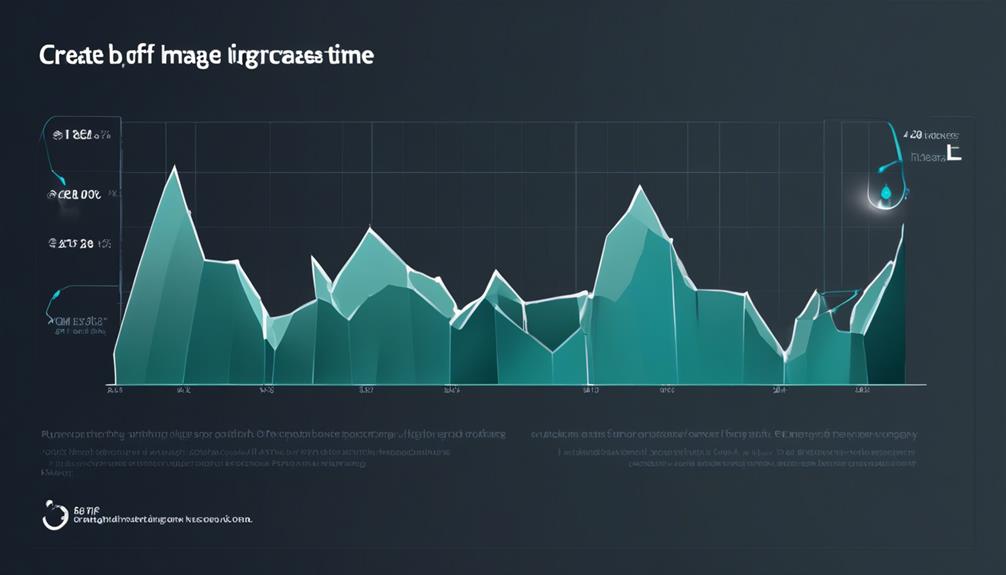To calculate ROI for your email campaigns, subtract the total costs—including software, creative work, and list acquisition—from the revenue generated, which you track through links, codes, or purchase data. Then, divide the net profit by the campaign costs to get the ROI percentage. Focusing on segmentation, personalization, and ongoing testing can boost your results. Keep exploring these strategies to understand how to maximize your campaign’s financial impact effectively.
Key Takeaways
- Track campaign costs, including software, creative, and list acquisition expenses, to determine total expenditure.
- Measure revenue generated from email links, discount codes, or purchase data attributable to the campaign.
- Calculate net profit by subtracting total costs from revenue.
- Divide net profit by total campaign costs to obtain the ROI percentage.
- Incorporate segmentation and personalization data to refine ROI calculations and assess campaign effectiveness.

Understanding the return on investment (ROI) for your email campaigns is essential to determine their effectiveness and guide future marketing efforts. When you analyze ROI, you’re measuring how much revenue your campaigns generate compared to what you spend. This helps you optimize your strategies, making sure your efforts translate into tangible results. To get accurate insights, focus on key factors like segmentation strategies and personalization techniques. Segmentation strategies involve dividing your email list into specific groups based on demographics, behaviors,, or purchase history. This allows you to craft targeted messages that resonate more deeply with each segment. When your emails are relevant to recipients, open rates and click-through rates tend to increase, leading to higher conversions and better ROI. Personalization techniques go even further by customizing content for individual subscribers. Using their name, referencing past purchases, or offering tailored recommendations makes your emails feel more personal and engaging. These techniques boost engagement because recipients see your emails as valuable rather than generic spam. To effectively evaluate ROI, start by tracking your total campaign costs, including software, creative resources, and list acquisition expenses. Then, measure the revenue generated from each campaign, which can be tracked through specific links, discount codes, or purchase data. Deduct your costs from your revenue to determine your net profit, and divide that by your costs to find your ROI percentage. Incorporating segmentation strategies and personalization techniques enhances this calculation because they tend to increase conversions, making your revenue higher relative to your investment. Also, consider the lifetime value of customers acquired through your campaigns. If your email efforts lead to repeat purchases or loyalty, your ROI improves even more over time. Continuously testing different segmentation criteria and personalization methods helps you identify which approaches yield the best results. Use A/B testing to compare different email versions, subject lines, or offers, and analyze how each impacts your ROI. Remember, the goal is to deliver the right message to the right person at the right time. When your segmentation strategies are tight, and your personalization techniques are sophisticated, your campaigns become more effective and financially rewarding. By regularly reviewing and refining these elements, you’ll gain a clearer picture of your ROI, allowing you to allocate your marketing budget more efficiently and boost your overall campaign performance. Ultimately, understanding how segmentation and personalization influence your ROI gives you the power to create smarter, more profitable email marketing strategies that drive long-term growth. Additionally, understanding legal requirements related to email content can prevent potential penalties and protect your reputation.
Frequently Asked Questions
How Often Should I Update My ROI Calculations?
You should update your ROI calculations regularly, ideally aligning with your campaign frequency and data update schedule. For most campaigns, weekly or monthly updates provide fresh insights, helping you optimize strategies promptly. If your campaigns run frequently, consider more frequent updates to track performance accurately. Consistent updates guarantee you stay informed about what’s working, allowing you to make necessary adjustments and maximize your email marketing ROI effectively.
What Tools Are Best for Tracking Email Campaign ROI?
Think of email attribution and campaign analytics as your GPS for tracking success. Tools like Google Analytics, Mailchimp, and HubSpot are your best allies, providing detailed insights into your email ROI. They help you measure open rates, click-throughs, and conversions, ensuring you see exactly where your investment pays off. Use these tools regularly to keep your campaign analytics sharp and your ROI on the right path.
How Do I Measure Long-Term Customer Value From Emails?
You measure long-term customer value from emails by tracking customer lifetime value through your analytics tools. Use predictive analytics to forecast future spending and engagement based on past behaviors. Segment your audience to identify high-value customers and analyze their interactions over time. This approach helps you understand which email strategies foster loyalty, ensuring your campaigns focus on nurturing long-term relationships rather than just immediate sales.
What Are Common Mistakes in Calculating Email ROI?
You might think tracking email ROI is simple, but many stumble by ignoring email attribution and conversion tracking. Common mistakes include neglecting proper attribution models, which skews results, and forgetting to track all conversions accurately. Without clear data, you’ll underestimate or overestimate your ROI. Be diligent, set up thorough tracking, and make certain your attribution methods capture every touchpoint, or you’ll be chasing ghosts rather than real results.
How Does Segmentation Affect ROI Accuracy?
Segmentation improves ROI accuracy by enabling personalized strategies that target specific customer groups, leading to more relevant content and higher engagement. However, segmentation challenges like data quality issues or overly narrow criteria can skew results, making ROI calculations less precise. You should regularly refine your segmentation approach, ensuring your data is accurate and your groups are well-defined, so your ROI measurement truly reflects your campaign’s effectiveness.
Conclusion
By now, you see how vital it is to measure your email campaign ROI like a savvy 21st-century merchant. Tracking your costs and conversions ensures you’re not sailing blind in this digital age. Remember, even the most legendary explorers relied on maps—so don’t forget to analyze your data regularly. With these insights, you’ll turn your email efforts into a treasure chest of returns, avoiding the pitfalls of a digital Don Quixote chasing windmills.








